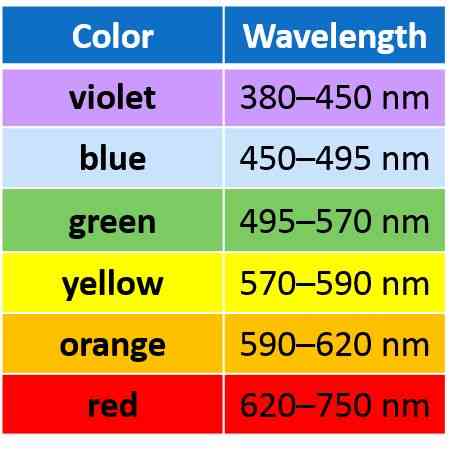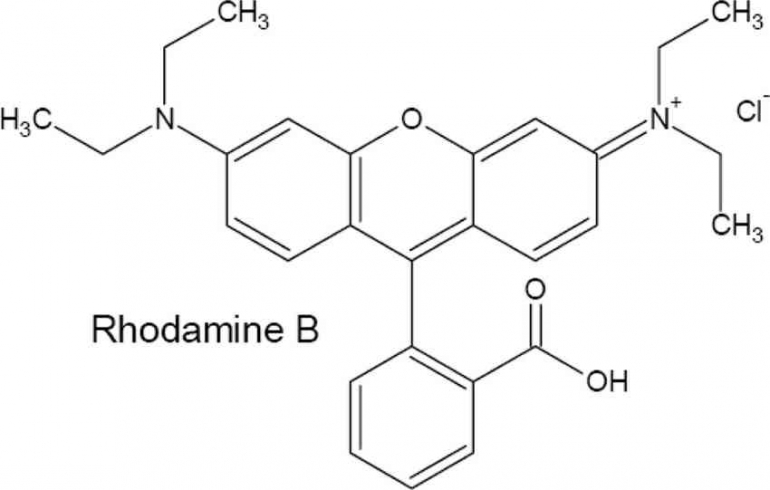"Lipstick is not just about pretty colors but creating art in every smile and a story in every stroke of lips."
Lipstick is one of the most popular cosmetic products in the beauty world. It is used to beautify the lips and can help users express themselves and enhance their beauty. Apart from attracting attention with the final color given, many people find the process of using Lipstick interesting because applying Lipstick is simple but can produce a beautiful and charming color on the lips. Lipstick's ability to provide beautiful and charming color to the lips is one of the reasons why it is so popular.
Lipstick has been around for centuries and continues to evolve. Initially, natural ingredients such as fruit and organic dyes were used to color the lips. However, as technology has advanced, lipstick formulations have improved significantly, resulting in the high-quality products we have today.
Lipstick is formulated with hydrophobic ingredients to provide long-lasting results, does not fade quickly, and provides optimal softness and shine on the lips. Hydrophobic materials do not attract water or cannot dissolve in water so they can form a waterproof protective layer.
Lipsticks are typically made from a combination of ingredients, including:
1. Wax
It provides rigidity to Lipstick, maintains its shape, increases durability, provides shine, and prevents Lipstick from dissolving or breaking down when exposed to water. Examples include beeswax, candelilla wax, carnauba wax, and microcrystalline wax.
2. Oil
This adds softness and ease of application and adds shine to the lips. It is hydrophobic to prevent changes in color and texture when exposed to water. For example, jojoba oil, almond oil, mineral oil, avocado oil, and argan oil.
3. Pigment
Gives color to Lipstick. These pigments are often hydrophobic to ensure long-lasting lip color and keep the color intense, not fading when exposed to water or humidity. For example, carmine and iron oxide.
4. Emollient
Softens and moisturizes lips, provides a comfortable feeling, and helps Lipstick glide more easily when applied. Some emollients are hydrophobic and form a protective layer on the lips. Examples include lanolin, shea butter, and aloe vera.
5. Solvent
Solvents help unite all the ingredients in Lipstick or are substances that can dissolve other substances. The solvents used in Lipstick are organic solvents such as ethyl acetate, propylene glycol, and alcohol. Solvents can also help keep Lipstick from drying out too much. Solvents are divided into 2: volatile solvents, which provide a calm and light sensation but can make the lips dry more quickly, and non-volatile solvents, which add softness and durability but can make the lips dry. The product feels heavy.
6. Conservative
Additional ingredients commonly used to prevent the growth of bacteria, fungi, and other microorganisms. A conservative attitude is essential in cosmetic products to maintain their safety and quality over the long term, mainly because they are often exposed to air and potential contaminants during use. For example, Parabens, Phenoxyethanol, Benzyl Alcohol, and Chlorphenesin.
Lipstick works by capturing and playing with light in fascinating ways. The colors in Lipstick come from pigments that grab onto specific light colors. So, the color you see on your lips is closely tied to the colors of light that bounce back. The interplay of absorbed and reflected light gives lipsticks their wide range of colors. The wavelength of the reflected light is critical in creating a unique and attractive shade on your lips. This dynamic interaction produces a visually appealing effect that is both charming and subtle.
Wavelength means measuring the distance between two consecutive peaks or troughs in a wave. In science and physics, we often use the Greek letter lambda () as a symbol to represent wavelength. This distance is typically measured in units of length, such as meters (m), centimeters (cm), or even nanometers (nm), depending on the scale of the wave. These units provide us with a standardized way of understanding the size or scale of wavelengths in different contexts.

The light our eyes perceive is visible in a specific wavelength range between 380 and 740 nanometers (nm). When it comes to Lipstick, Lipstick displays its charm by absorbing visible light in this wavelength range. But here's the exciting thing: Lipstick absorbs light and interacts with wavelengths. The pigments in Lipstick selectively absorb and reflect light, and this dynamic interaction produces the beautiful array of colors we see on our lips.
The specific color you want to show off depends on the light wavelength the Lipstick pigments absorb and reflect. So, Lipstick provides color by absorbing and reflecting light from the dye to create a charming lip color.
Lipstick has a charming and colorful color because of the pigment. Lipstick is more than just a colorful cosmetic. It is a carefully and well-crafted mixture of pigments and various ingredients. Pigments give color, absorb light at specific wavelengths, and reflect other light. In the lipstick world, these pigments are the artists, and the dyes do not work alone. Still, they are mixed with a concoction of oils, waxes, and emollients, resulting in a unique lipstick formula.
The texture, smooth or creamy; the finish, matte or glossy; and the staying power, how long it stays on the lips. Lips, all depending on a unique concoction of pigments and other ingredients.
This formula is the secret behind the uniqueness of each Lipstick. It's not just about the color but also the texture, finish, and length of the color on the lips. Oils contribute to smooth lips, waxes provide structure, and emollients ensure your lips stay soft and hydrated. So, swiping your favorite Lipstick on your lips combines pigments and other ingredients to give your lips a beautiful and perfect color.
Red has always been the favorite and most popular lipstick color in beauty. Its elegance and boldness make red Lipstick the leading and iconic choice for beauty lovers worldwide.
There are several reasons why red Lipstick has become so popular:
1. First, red is a strong and bold color. This color can make a person's appearance more prominent and attract attention.
2. Second, red is a universal color. Women of all ages, races, and styles can wear this color.
3. Third, red is a classic and iconic color. This color has been a symbol of beauty and femininity for centuries. Red Lipstick can be used for various formal and casual events. Red Lipstick can also be combined with multiple clothing styles, from traditional to casual clothing.
It is interesting to know that making red Lipstick involves various techniques to get different colors. The methods used vary. Some use natural ingredients, others use synthetic materials, and some combine the two to perfect the attractive red color.
Some common red coloring ingredients used in Lipstick include:
1. Carmine (Cochineal): A natural dye from the Cochineal insect. Used to give red color to Lipstick.
2. Iron Oxide Pigments: Synthetic dyes commonly used in various cosmetic products. It can provide a variety of intense red colors.
3. Betanin: Natural coloring found in beets. It has a bright red color and beneficial antioxidant properties.
4. Red 7 Lake and Red 27 Dye: Synthetic dyes that color Lipstick red. Used to create an attractive and long-lasting appearance.
5. Titanium Dioxide: Used to give light color to Lipstick. Besides being a dye, titanium dioxide also has protective properties from UV rays.
6. Ponceau 4R: Synthetic dye that gives Lipstick a red hue. Often used to create pops of color.
7. Erythrosine: A synthetic colorant often used in Lipstick and other cosmetic products. Gives a soft red feel.
8. Red 28: Synthetic dye with intense red nuances. Contributes to the bright color of the Lipstick.
9. Anthocyanin: Natural coloring found in fruits and plants. Provides a natural and attractive red color.
10. Carotene: A natural coloring often found in carrots and orange vegetables. It can give a warm orange-red color to Lipstick.
11. Curcumin: A natural colorant found in turmeric. Gives a yellowish-red nuance to Lipstick.
12. Rhodamine B: You must be careful about synthetic dyes, which may raise health concerns. Their use needs to be monitored and carefully considered in the formulation of cosmetic products.
It is important to note that the synthetic coloring agent Rhodamine B has been banned in the cosmetics industry, as it may raise serious health concerns. Rules and regulations governing the use of this material have been implemented to maintain consumer safety and health. There is an unequivocal prohibition in the regulations that prohibits using Rhodamine B in Lipstick and other cosmetic products.
This prohibition is contained in several laws and regulations which aim to protect public health from the dangers of these substances.
These regulations include:
- Regulation of the Minister of Health of the Republic of Indonesia Number 239/Menkes/Per/V/85 concerning Certain Dyes Declared as Hazardous Substances.
- Regulation of the Minister of Health of the Republic of Indonesia Number 18 of 2015 concerning Cosmetics.
This ban is essential to protect consumers from the potential risks of Rhodamine B, including irritating effects, allergies, and even carcinogenic risks. Therefore, the cosmetics industry is stressed to strictly comply with these rules and replace coloring ingredients with safe and reliable options to maintain the health and safety of users of cosmetic products, especially lipsticks that have direct contact with the skin of the lips.

Rhodamine B, or sumba, is a synthetic dye commonly used in the textile and paper industry. It has the molecular formula (C28H31C1N2O3). Rhodamine B is a green or red crystalline powder, producing a bluish-red color at high concentrations and a bright red color at low concentrations.
However, according to WHO, Rhodamine B contains dangerous and reactive halogen compounds such as acetylation (CH3-CH3) and chlorine (Cl). These compounds can be hazardous to humans and have high reactivity.
Chlorine compounds are radicals and can bind with other compounds in the body so that they can trigger cancer. Rhodamine B can bind proteins and organic macromolecules, causing the accumulation of Rhodamine B in the skin. This accumulation can result in systemic absorption of the substance. In addition, if Rhodamine B is used in Lipstick, it can harm the lips.
There are several reasons why lipstick manufacturers still use Rhodamine B as a red dye in Lipstick, including:
- Product Aesthetics: Some manufacturers may believe that Rhodamine B provides the desired visual effects, such as intense, vibrant red colors that are difficult to achieve with alternative colorants.
- Limitations of Substitutes: An entirely satisfactory substitute in performance and cost for Rhodamine B in Lipstick applications may still be needed.
- Regulatory Uncertainty: In some cases, uncertainty or weaknesses in regulations may make some manufacturers feel more comfortable using Rhodamine B.
- Price and Availability: Rhodamine B may be more affordable and accessible than some red dye alternatives. These economic factors can influence manufacturers' decisions in choosing coloring materials to maintain competitive prices.
- Color Intensity: Rhodamine B is known for providing an intense red color. The continued use of this ingredient may be related to the manufacturer's desire to achieve striking and attractive color results in Lipstick.
- Color Stability: Rhodamine B can offer good color stability in lipstick products. This can be an essential consideration for manufacturers to keep the lipstick color bright and long-lasting.
- Lack of socialization: The lack of socialization about the dangers of using rhodamine B in public means that manufacturers still use this material because they need to learn and understand its risks. It also makes lipstick consumers still use Lipstick with this ingredient without knowing the health risks that can be caused.
- Market Demands and Consumer Preferences: If the red Lipstick produced by Rhodamin B is still in demand by consumers. Manufacturers may meet market demand to maintain the popularity of their products.
Several ways to avoid Lipstick containing rhodamine B:
- Check the Ingredient List: Please pay attention to whether there is any indication of Rhodamine B or its alternative names, such as Cl 45170 or Food Red 3.
- Choose a lipstick that is labeled BPOM.
- Read Reviews and Testimonials.
- Avoid buying Lipstick from unofficial sellers.
- Pay attention to the color of the Lipstick: Lipstick containing rhodamine B usually has a bright red color and is too dark.
- Pay attention to the price of Lipstick: Lipsticks that are too cheap usually contain low-quality ingredients, including rhodamine B.
- Research Brands and Manufacturers.
- Choose Lipstick from Countries with Strict Regulations.
We must realize that beauty often comes with a deep health consideration. Even though the process of creating color on the lips using Lipstick looks simple, We also need to be aware of certain dangers, such as using Rhodamine B as a coloring agent in Lipstick. Through a deeper understanding of safe dye ingredients and preventive measures, we can still look beautiful without sacrificing our health. By choosing a safe Lipstick, we can express ourselves without risking the health of our lips and body. Consumer awareness and stricter policies in the cosmetics industry will help create products that are not only beautiful but also safe to use.
Baca konten-konten menarik Kompasiana langsung dari smartphone kamu. Follow channel WhatsApp Kompasiana sekarang di sini: https://whatsapp.com/channel/0029VaYjYaL4Spk7WflFYJ2H









